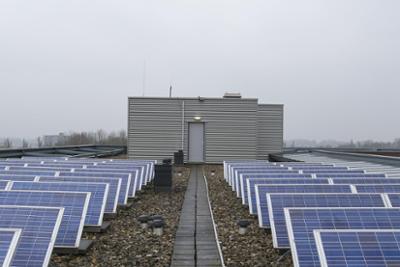

How is solar energy stored?
Generating new energies from renewable sources is one of the biggest challenges currently facing society. These new sources of energy must be useful, fast and have the capacity to solve the problems we face. That's what solar energy does and in this article were going to explain how it's stored.
New energy sources, which provide an innovative solution to the pollution cause by the energy obtained from burning fossil fuels is one of the key areas worked on in today’s society to attempt to put an end to climate change or minimise it as much as possible.
All energies from inexhaustible natural sources are a good option for the world of today. That’s why so much work is being done for the better development and conservation of these sources. The challenge is not only to find new energies but also how to store them and find the most efficient way of converting them into useful energy for us.
Once technological development and new tools have allowed for the generation of energy from solar lights, batteries are responsible for collecting, and facilitating the use of, solar energy.
What is photovoltaic solar energy?
Before explaining how this energy is stored, we have to understand what it is. Photovoltaic solar energy is energy that directly transforms solar light into electricity using different photovoltaic cells that receive direct radiation and complete the process of transformation into electricity. Once it has been converted, solar energy is stored in solar batteries, which are the elements that transfer energy to the electric current.
Thanks to extensive technological development, this kind of renewable energy is becoming increasingly easier to apply in different areas of society. From individual use to use by companies. This way, everyone can avail of photovoltaic cells, commonly called solar panels on their homes, buildings or vehicles to generate energy from daylight.
So, this energy, so easily exploited, is key in areas where there is greater exposure to the sun, making it a simple way to generate renewable energy. This paradigm shift leaves society with these advances in energy will be among the key areas covered at the transversal, multi-sectoral event Global Mobility Call at IFEMA MADRID. The conference hosts five different forums where photovoltaic energy will feature in many of the debates.
How is solar energy produced and stored on solar batteries?
The process of transforming solar light into energy is also responsible for its storage. The batteries installed in photovoltaic cells generate this electricity thanks to solar radiation that accumulates during the periods when they receive the sun’s rays directly, while at night or at times when there is no radiation, the excess energy is stored.
What batteries are used?
In this storage process, the battery is fundamental for the technological capacity to transform or conserve energy.
There are three different types of batteries;
- Monoblock batteries: These are the most common batteries and are mainly used in self-generation of solar energy. They do not reach high levels of power and are not capable of generating large quantities of energy but they are perfectly suitable for domestic use and the electrical load a household might have. Their use is designed for small workloads and the duration varies depending on the brand, reaching up to ten years of useful life.
- Stationary batteries: These batteries are used with a set of photovoltaic cells and to supply a greater energy load. They are used to supply considerably more energy than monoblock batteries and, therefore, can support a greater discharge cycle. Naturally, their use is more focused on industrial activity and the useful life of the batteries can exceed twenty years.
- Lithium batteries: These are the most common batteries. We can find them, for example, in our mobile phone. They are the most efficient on the market, thanks to their great capacity, duration and usability. Thanks to their efficiency, their cost is also lower. In this case, when it comes to accumulating solar energy, their duration and capacity makes them the most attractive option.





